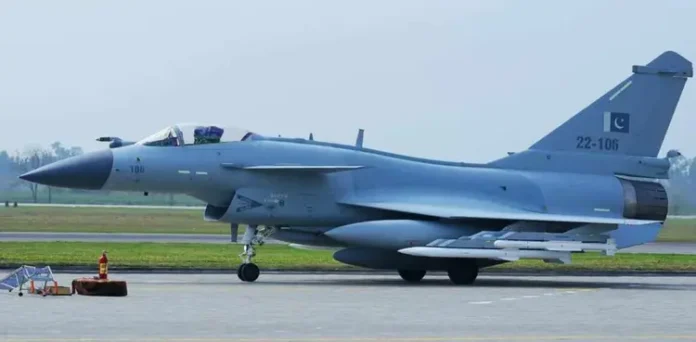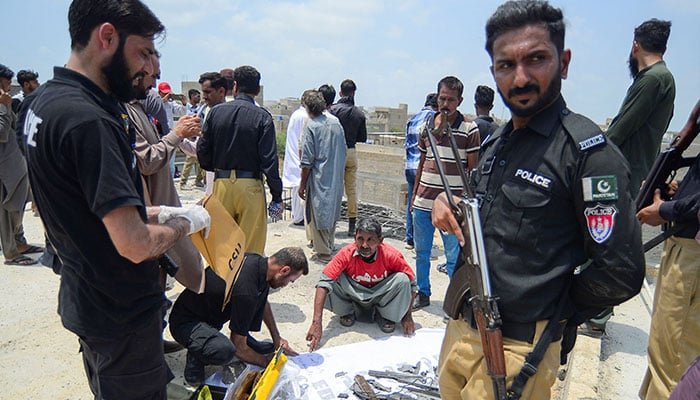Pakistani J-10 Fighter Jets Reportedly Shoot Down Indian Rafale Aircraft in Major Military Escalation
In a significant development that may reshape perceptions of regional air superiority, Chinese-made J-10 fighter jets operated by the Pakistan Air Force (PAF) reportedly shot down multiple Indian military aircraft, including at least one French-made Rafale jet, according to two U.S. defense officials who spoke with Reuters.
This event marks a critical milestone for Beijing’s advanced combat aircraft technology, showcasing the combat effectiveness of Chinese fighters in real-time conflict for the first time against a Western counterpart.
Chinese J-10 Fighters Used in Shoot Down Indian Rafale Aircraft
According to anonymous U.S. officials, Pakistan employed the J-10C Vigorous Dragon, an advanced 4.5-generation multirole fighter jet, to engage Indian jets during heightened border tensions. These officials confirmed with high confidence that air-to-air missiles were launched by Pakistan’s J-10 aircraft, resulting in the downing of at least two Indian fighter jets, including one Rafale Aircraft.
Notably, the officials clarified that F-16 jets—long operated by the PAF and built by Lockheed Martin—were not used in this engagement, a significant detail in light of previous controversies surrounding F-16 usage in conflicts with India.
India Denies Loss, Claims Strikes on Terror Targets
The Indian Air Force (IAF) has not publicly acknowledged the loss of any aircraft. Instead, it stated that its operations successfully targeted “terrorist infrastructure” inside Pakistani territory. When contacted for comment, an IAF spokesperson declined to respond to the Reuters report.
Despite official silence, some local Indian authorities have reportedly acknowledged the crash of up to three aircraft on Indian soil. Meanwhile, on the Pakistani side, Defense Minister Khawaja Muhammad Asif told Reuters that three Rafale Aircraft were brought down using the J-10, with five Indian Rafale Aircraft total claimed to be shot down during this recent exchange.
Why This Matters: Implications for Global Military Strategy
This is the first Western confirmation of the Chinese J-10’s operational use in live combat against advanced Western-made aircraft. Analysts believe this could significantly impact how military strategists in Washington, Beijing, and beyond assess air dominance scenarios in the Taiwan Strait and the wider Indo-Pacific region.
Air Combat Capabilities Under Scrutiny
Both the J-10C and the Rafale Aircraft are categorized as 4.5-generation fighter jets, equipped with modern radar, stealth features, and long-range weapons. Pakistan’s J-10C jets are believed to be equipped with the PL-15 beyond-visual-range (BVR) air-to-air missiles, which boast an estimated range exceeding 200 km.
The Indian Rafale Aircraft, built by Dassault Aviation, are typically armed with the Meteor missile, a European BVR missile considered one of the most advanced in the world. However, it remains unclear whether Meteor missiles were carried during this specific mission or how they were deployed.
Global Reactions and Strategic Analysis
“Closely Eyed” by Global Defense Communities
Military analysts and defense communities across the U.S., Europe, and China are now analyzing the encounter for insights into tactics, technologies, and outcomes. According to Douglas Barrie, a senior fellow at the International Institute for Strategic Studies (IISS), these real-world engagements provide rare opportunities to study advanced air warfare strategies.
“Air warfare communities in China, the U.S., and Europe will be extremely interested in understanding what worked, what didn’t, and how technologies performed under pressure,” said Barrie.
Comparing PL-15 vs. Meteor Missiles
The confrontation also sparked online discussions comparing China’s PL-15 missile with the Meteor, manufactured by the MBDA consortium (which includes BAE Systems, Airbus, and Leonardo). While both are regarded as world-class BVR missiles, key operational details such as radar lock success rates, electronic countermeasure resilience, and tracking performance remain undisclosed.
Ongoing Border Skirmishes and Drone Warfare
Tensions have continued to escalate since the initial air clash. Explosions were reported in Jammu, Indian-administered Kashmir, late Thursday night. Indian military sources suspect the blasts were the result of a Pakistani drone strike, marking the second day of military clashes.
Drone Attacks and Air Defense Response
-
Pakistan claims to have shot down 25 Indian drones overnight, allegedly sent across the border for surveillance or offensive purposes.
-
India, on the other hand, stated that its air defenses successfully repelled multiple drone and missile attacks launched by Pakistan, targeting Indian military installations.
This ongoing exchange marks one of the most severe escalations between the two nuclear-armed rivals in recent years.
Historical Context: A Volatile Nuclear Flashpoint
India and Pakistan have fought three full-scale wars since their independence in 1947, and countless border skirmishes—especially over the disputed Kashmir region. The latest aerial conflict underscores the growing complexity of modern warfare in South Asia, now involving cutting-edge drones, smart munitions, and AI-assisted targeting systems.
The use of advanced Chinese fighters and Western aircraft in direct conflict could potentially reshape defense procurement and alliance strategies in Asia, Europe, and beyond.
Conclusion
The reported use of China’s J-10C fighter jet by Pakistan to shoot down advanced Indian aircraft marks a historic moment in global military dynamics. As both nations continue to operate at high alert and international powers call for de-escalation, this conflict not only affects regional stability but also holds global strategic importance. Future air conflicts may increasingly rely on the performance of such next-generation platforms, making every real-world engagement a critical learning point for military planners worldwide.




